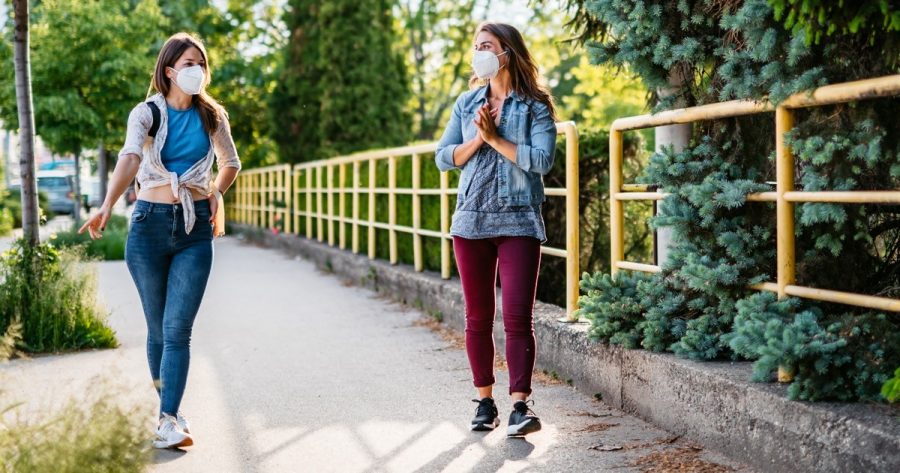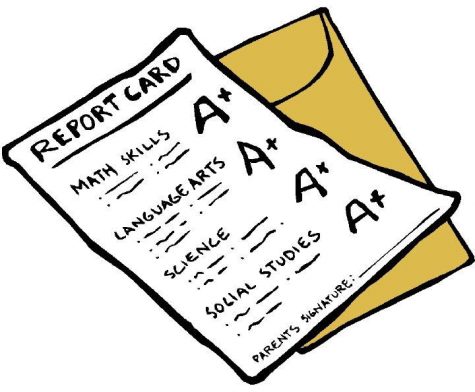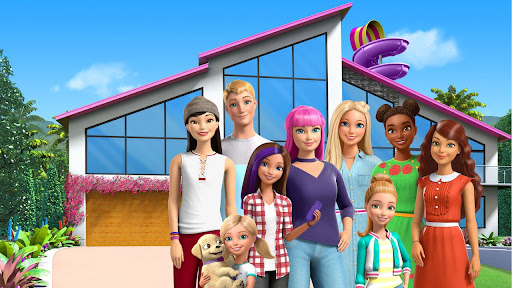Confronting Social Insecurities Amidst Covid
Masks. Spaced out desks. Hallway direction arrows. Virtual Wednesdays. Due to the Covid pandemic, daily life at school looks much different now than it did 13 months ago. As our daily lives changed over the past year, we’ve tried to preserve as many constants as possible. However, we have to acknowledge that society won’t just go back to the way it was pre-Covid, quarantine, isolation, and social distancing have all had impacts beyond the intended purpose of keeping everybody safe and healthy. As the world continues on the road to recovery, we have to ask ourselves: “How has the pandemic affected our relationships — for better or worse?”
To begin with the most obvious, masks and social distancing protocols have undeniably changed the way that people interact. LifeCompass Institute Director Mrs. Kris shared her insights on Covid safety protocols: “It’s a great health thing, but I do worry about the mental health piece of it.” Over this past year, we have had to try to balance relationships and safety. While masks, social distancing, and quarantine are all proven to be effective measures against Covid, the downside to these procedures is that engaging with the people around us can be harder than in pre-pandemic times. In a survey about social insecurities due to Covid, 88.9% of students said that they have found making friends and talking to casual acquaintances harder since the beginning of the pandemic. Masks have definitely added to this predicament – being unable to see part of your friend’s face and show part of your’s removes a subtle but significant connection in your interaction. Mrs. Kris remarked: “There’s little things we used to do to kind of communicate connection with people like a slight smile sticking your tongue out at a friend, but now suddenly you’re sticking your tongue out and licking your mask accidentally.”
Mask wearing hasn’t just affected how we can communicate with each other through words or actions, but it also affects our perception of others’ emotions. Gabriella Bachiochi ‘21 said: “It’s harder to know where someone is and how they are doing. It’s also awkward to not be able to offer a hug or even a smile. Sometimes you can tell someone just needs one and Covid has definitely made that difficult.” Elyza Tuan ‘23 said: “When talking to people through masks, it’s harder to gauge social cues.” She added: “With the masks, what feels like yelling to me sounds normal to others, so social situations get overwhelming and exhausting really easily.” Mrs. Kris and I have talked about a social experiment with a baby where it was discovered that, of all emotions, the baby was most distressed when an adult looked towards the baby with a resting face. In some ways, the pandemic has made us like this baby: the inability to be confident in interpreting others’ emotions can lead to stress and a pull to disconnect.
Disengagement is another issue especially brought to light in the pandemic. “Zoom fatigue” is very much a real and relatable phenomenon. Mrs. Kris makes the case that because Zoom and social media don’t rely on “really authentic body language,” it can be harder to feel the connection with others that comes with in-person interactions. However, even in-person relationships have suffered as restrictions are lifted. 59.3% of surveyed students reported feeling that they have a lower social battery. After the initial quarantine, where we only interacted with our immediate families, the return to in-person learning came as a shock to some. Our “social muscles” hadn’t been truly exercised in months, and the sudden immersion in classes and activities may have felt more tiring than we anticipated. Important safety protocols like masks and social distancing can have the unfortunate effect of making one less eager to speak out casually in class. Every hand raised and comment made seems to be done with predetermined purpose. Because of this and a general fatigue, classes and extracurriculars can feel harder to participate in. And 88.9% of respondents said that they felt their participation in school activities has been negatively impacted since the beginning of the pandemic.
After reading all of the above, one may (a bit hopelessly) ask: “But where does this leave us?” While it is easy and intriguing to overanalyze the social insecurities wrought by Covid-19, there are fortunately ways in which we can work to combat this self-doubt. To address fatigue, the best thing you can do for yourself is get a healthy amount of sleep. This advice is given in practically every self-help article ever because it is true. If you really can’t get a full night of rest, try to catch up with naps or by going to bed earlier on the following day. In terms of social engagement, eye contact is a huge way in which you can show your interest in what somebody has to say — as a mask covers your mouth and nose (it should), eyes are one of the easiest ways for us to communicate nonverbally. Mrs. Kris has challenged her Habits of Mind class to “find a way to smile without your mouth.” From gesticulating with your arms to turning your head when somebody talks to you, try out different ways to effectively communicate while still following safety guidelines.
Make an effort to say “Hi” to somebody while passing by. This kind of casual interaction, in place of nods or smiles now covered by masks, can feel affirming to all parties involved. If you’re innovative with new ways to communicate, the possibilities are endless. We also have much to look forward to: though the pandemic is definitely not over, the vaccine rollout continues, and we are approaching spring break and the end of the school year. As Mrs. Kris reminds me, “hope is on the horizon.”
Tess Farr ‘22, Copy Editor and Ask Alice Editor







